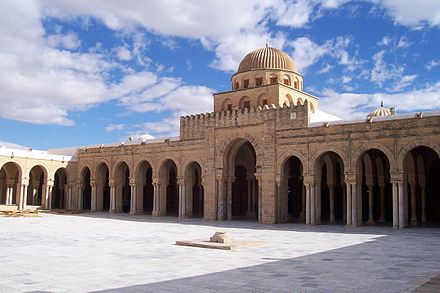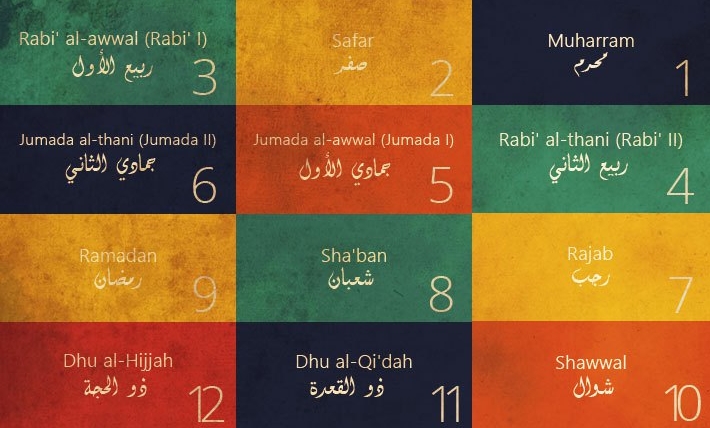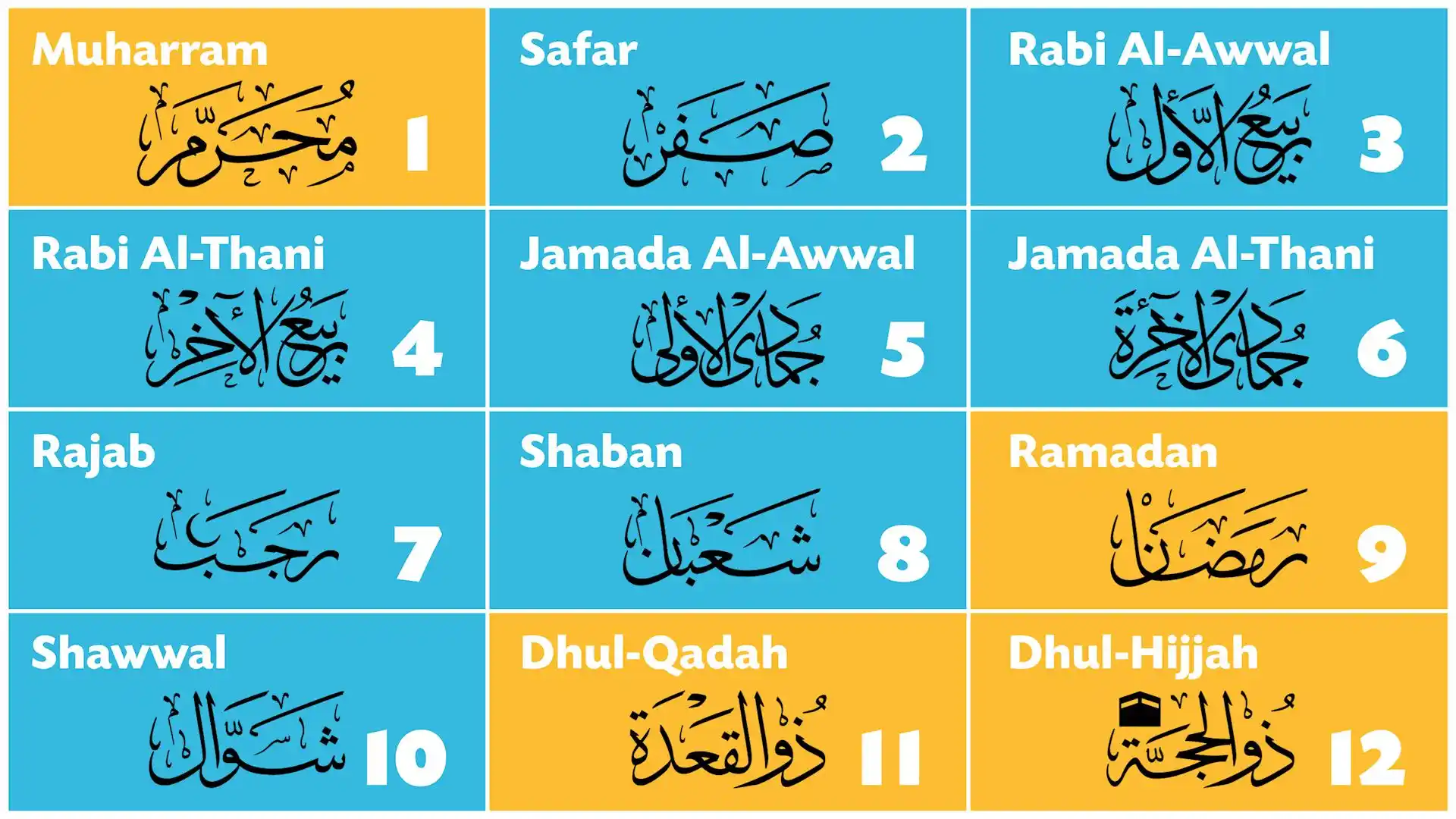The Islamic calendar, also known as the Hijri calendar, is a lunar-based calendar used by Muslims worldwide to determine religious holidays and events. The Islamic calendar consists of twelve months, with each month lasting either 29 or 30 days. The calendar is used primarily to determine the timing of Islamic religious observances, such as Ramadan, Eid al-Fitr, and Eid al-Adha.
In this comprehensive guide, we will delve into the history and facts surrounding the Islamic calendar, exploring its origins, development, and significance in the Muslim world. Through this guide, we aim to provide a detailed and informative resource for those seeking to learn more about the Islamic calendar and its role in Islamic culture and tradition.
Origins of the Islamic Calendar
The Islamic Calendar was introduced in 638 CE by Caliph Umar, who was the second caliph of Islam. Before the introduction of the Islamic Calendar, the Arab world used a variety of different calendars, including the Julian calendar and the Arabian calendar. However, these calendars were based on the solar year, which meant that they did not always align with the lunar cycles that are used in Islam.
To address this issue, Caliph Umar established the Islamic Calendar, which is based on the lunar cycles. The first year of the Islamic Calendar, also known as the Hijri year, was 622 CE, which corresponds to the year that the Prophet Muhammad and his followers migrated from Mecca to Medina. The Islamic Calendar is a purely lunar calendar, which means that its months are based on the cycles of the Moon, and its year is shorter than the solar year by about 11 days. As a result, the Islamic Calendar shifts relative to the Gregorian calendar by approximately 11 days every year.
Book now: Islamic Studies Course Online For Kids: Providing Convenient and Quality Islamic Education
Structure of the Islamic Calendar

The Islamic calendar consists of twelve lunar months, with each month beginning with the sighting of the new moon. The months are either 29 or 30 days long, depending on the sighting of the moon. The order of the months in the Islamic calendar is as follows:
- Muharram
- Safar
- Rabi al-Awwal
- Rabi al-Thani
- Jumada al-Awwal
- Jumada al-Thani
- Rajab
- Sha’ban
- Ramadan
- Shawwal
- Dhu al-Qidah
- Dhu al-Hijjah
The Islamic calendar is 11 days shorter than the Gregorian calendar, which is a solar-based calendar. As a result, the Islamic calendar year shifts earlier by about 11 days every year. To adjust for this, the Islamic calendar has a 30-year cycle that alternates between 11 and 12 days shorter than the solar year.
Significance of the Islamic Calendar
The Islamic calendar plays a significant role in the religious and cultural traditions of the Muslim world. It is used to determine the timing of important Islamic holidays and events, including Ramadan, Eid al-Fitr, and Eid al-Adha. Ramadan is the holiest month of the Islamic calendar, during which Muslims fast from dawn until sunset. The fast is broken at sunset with a meal called Iftar. Ramadan begins with the sighting of the new moon in the month of Ramadan and lasts for 29 or 30 days. Eid al-Fitr is the first day of the month of Shawwal, which follows the month of Ramadan. It marks the end of the month-long fast and is celebrated with prayers and feasting. Eid al-Adha is celebrated on the 10th day of the month of Dhu al-Hijjah and marks the end of the annual Hajj pilgrimage to Mecca. It commemorates Prophet Ibrahim’s willingness to sacrifice his son as a sign of his devotion to God. Muslims around the world celebrate Eid al-Adha with prayers, feasting, and the sacrifice of an animal, such as a goat or a sheep, to symbolize Prophet Ibrahim’s sacrifice.
In addition to religious observances, the Islamic calendar is also used for various cultural and social events. For example, the Islamic New Year, known as Muharram, is a time for reflection and contemplation, while the month of Rajab is associated with the Prophet’s night journey and ascension to heaven, known as the Isra and Mi’raj.
Facts about the Islamic Calendar

- The Islamic Calendar consists of 12 months, each of which has either 29 or 30 days. The months are Muharram, Safar, Rabi al-Awwal, Rabi al-Thani, Jumada al-Awwal, Jumada al-Thani, Rajab, Sha’ban, Ramadan, Shawwal, Dhu al-Qa’dah, and Dhu al-Hijjah.
- The Islamic Calendar is not only used for religious purposes, but also for practical purposes such as determining the start and end of the fasting month of Ramadan.
- The Islamic Calendar is widely used in Muslim-majority countries and is recognized as an official calendar in many of these countries.
- The year 2023 CE corresponds to the Islamic year 1444 AH.
- Because the Islamic Calendar is based on the cycles of the Moon, it is not synchronized with the solar year, which is the basis for the Gregorian calendar. As a result, the dates of Islamic events and observances shift relative to the Gregorian calendar every year.
Conclusion
The Islamic calendar is a significant aspect of Islamic culture and tradition, with its origins dating back to the pre-Islamic Arab calendar. The Islamic calendar was created to align the Islamic year with the lunar year, and the Hijrah was chosen as the starting point for the calendar. The calendar consists of twelve lunar months, with each month lasting either 29 or 30 days, and it is used to determine the timing of important Islamic religious observances and cultural events. Through this comprehensive guide, we hope to have provided a useful resource for those seeking to learn more about the history and facts surrounding the Islamic calendar.
Islamic Calendar FAQs
How is the Islamic Calendar different from the Gregorian calendar?
The Islamic Calendar is based on the lunar cycles, whereas the Gregorian calendar is based on the solar year. As a result, the Islamic Calendar is approximately 11 days shorter than the Gregorian calendar.
Why does the Islamic Calendar shift relative to the Gregorian calendar every year?
Why does the Islamic Calendar shift relative to the Gregorian calendar every year? A: The Islamic Calendar is based on the cycles of the Moon, whereas the Gregorian calendar is based on the solar year. Because the two calendars are not synchronized, the Islamic Calendar shifts relative to the Gregorian calendar by approximately 11 days every year.
What is the significance of the Hijri year 622 CE?
The year 622 CE corresponds to the year that the Prophet Muhammad and his followers migrated from Mecca to Medina, an event known as the Hijra. This event marks the beginning of the Islamic
Free Trial Lesson

